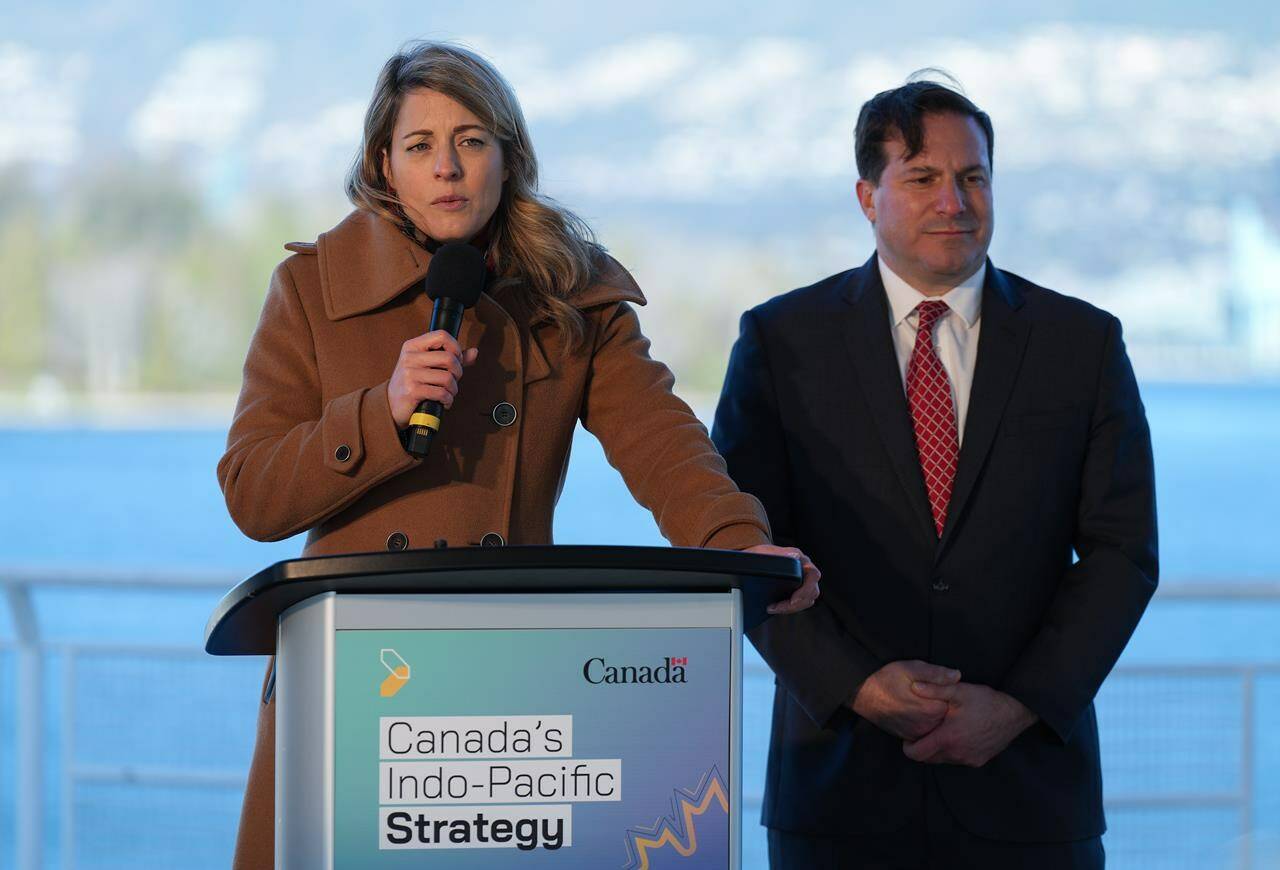Opposition parties and geopolitical experts say the Liberals’ new Indo-Pacific strategy needs an implementation plan.
The historic strategy unveiled Sunday has attracted blowback from China’s ambassador to Canada and criticism that it doesn’t respond to the region’s needs, although it has been warmly received by industry and many academics.
“This is the most substantive strategic document on foreign policy that we’ve seen from any Canadian government for a long time,” said Roland Paris, a former senior adviser to Prime Minister Justin Trudeau.
“I would like to hear more about how the government’s going to be reporting on whether it’s meeting specific targets, and how and whether it’s going to hold itself to account,” he said.
Ministers revealed the government’s priorities for the Indo-Pacific region on Sunday in a strategy they originally promised to release in fall 2020.
The strategy promises nearly $2.3 billion in new spending over five years, including for trade and military projects intended to counterbalance a rising China, and includes the clearest language yet on how Canada aims to handle its relationship with Beijing.
But it’s unclear how Ottawa will actually reach its goals, because the strategy lacks clear targets.
While it includes funding to hire more diplomats, it doesn’t specify how many, leaving out Trudeau’s promise earlier this month to hire for roughly 60 new positions.
And the only announcement pegged to a rough timeline is a plan to deploy a third naval frigate in the region next year.
Paris, the director of the University of Ottawa’s graduate school for international affairs, said the serious tone and clear priorities will only pan out if the Liberals provide more detail, especially on military assets.
“This is a zero-sum game, and so resources committed in one place aren’t available elsewhere, and I’d like to see how Canada is going to be allocating its scarce resources overall,” he said.
“There are a number of initiatives there that make a great deal of sense, but that require a little bit more clarification. Like, what is what is a trade gateway, exactly?”
The strategy calls for spending $24 million to establish some sort of hub to help Canadian businesses spot opportunities for innovation and investment ties in the region.
While the details are not specified in the strategy, International Trade Minister Mary Ng’s office described it Monday as a physical space that would likely be located in Singapore.
Conservative foreign affairs critic Michael Chong said he’s still digesting the strategy, but said that it can only be effective if the government follows up with implementation — something he said the government has not been good at when it comes to other foreign policy priorities.
Chong pointed to the Liberals’ legislation to ban imports made with forced Uyghur labour from Xinjiang, which he said does not appear to be enforced.
“In many respects, the strategy has come too late. The government is playing catch up to our democratic allies and partners in the region,” Chong wrote in an email.
He argued that the strategy does not clarify conflicting comments from Liberal ministers in recent weeks as to whether Canada plans to focus its trade on peer countries, dubbed “friendshoring,” or to maintain trade with autocracies.
He also noted that the strategy did not reference two military alliances that Canada has been left out of, known as the Quad, which includes Australia, India, Japan and the U.S., and AUKUS, a trilateral pact between Australia, the U.S. and the United Kingdom.
The NDP said Monday that it supports the strategy’s pledges to diversify trade away from China and deepen work on climate and human rights.
“We will fight for Canadians to ensure this is not just another empty promise by the Liberal government,” critic Heather McPherson said in a statement.
The Bloc Québécois said the strategy is crucial but it was skeptical Ottawa would do enough to actually bring it to life.
“Never, in more than 50 years, have we given ourselves the means to achieve our ambitions with regard to the Indo-Pacific region, and nothing in this new document suggests that the federal government will finally achieve its objectives there,” critic Stéphane Bergeron wrote in French.
In a Monday speech that was scheduled before the timing of the Liberals’ strategy release was public, Chinese ambassador Cong Peiwu told University of Ottawa students that the Canadian government should stop emulating the U.S. and resist a Cold War mentality.
“Unfortunately it seems that Canada has followed the United States practice of creating division and of fomenting confrontation in the region,” Cong said.
“When it comes to China, it distorted facts (and) hyped up the so-called China threat and infringed upon China’s internal affairs. We firmly oppose it.”
Cong said China presents an opportunity for economic growth and human development, and he argued that Canada is siding with an American approach that will only threaten global stability.
“In essence, it attempts to make Asia-Pacific countries pawns of U.S. hegemony, trying to provoke tension to mess up the Asia-Pacific region,” he said.
“This kind of groundless accusations and finger-pointing is really not conducive at all to our future co-operation.”
Journalists were allowed to attend the speech but forbidden from filming the remarks. During the speech, a blind was lowered over a window to block the view of a campus protest about China’s treatment of Uyghurs.
—Dylan Robertson, The Canadian Press
RELATED: Indo-Pacific strategy launch boosts military spending and visa processing in region

